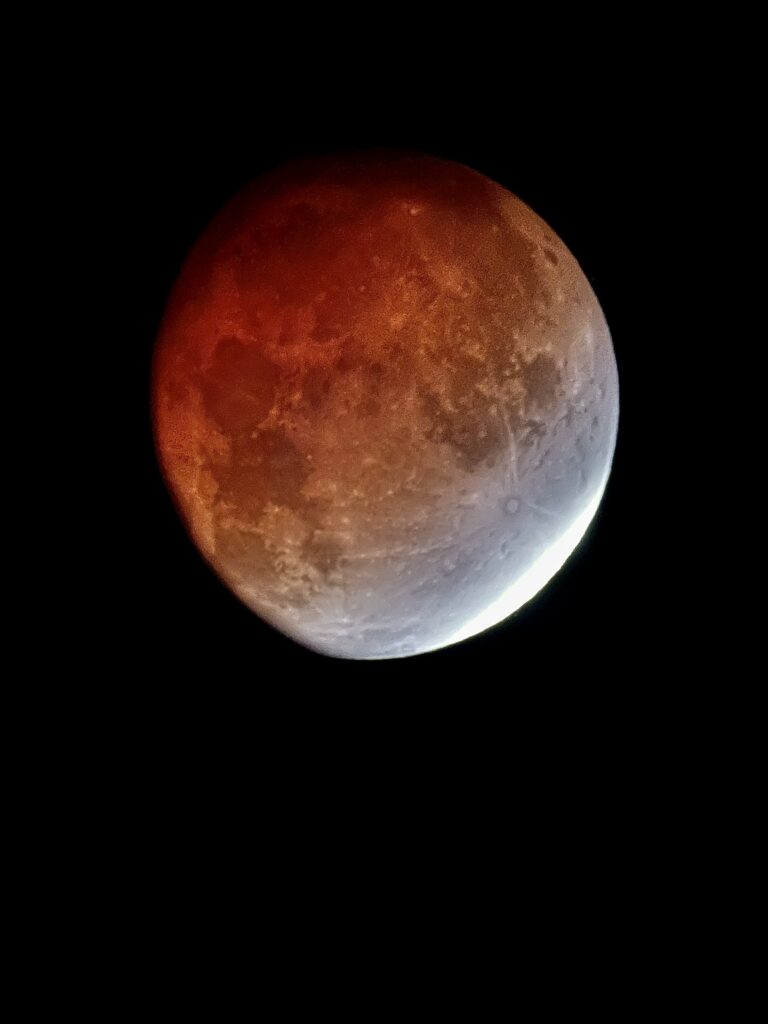In the very early morning of Friday November 19th, the full Moon slipped into the Earth’s shadow in an almost complete lunar eclipse, the longest in the century. This eclipse is particularly long because the Moon is at its farthest distance from the Earth on its elliptical orbit. During an eclipse, the Moon loses access to most of the sunlight that it usually reflects and can only reflect the small portion of redder light that bend around the Earth and through its atmosphere on the way to the Moon.
The four pictures below were taken by three physics majors. Connor McNeill (Class of 2024) and Michael Pedowitz (Class of 2024) took pictures that placed the lunar eclipse in the broader stellar context. In Connor’s picture, you can see Orion’s belt and sword to the left of the still relatively bright Moon (Fig. 1). Michael’s shows that the Moon was located right next to the Pleiades cluster, a set of seven bright stars that are sometimes called the Seven Sisters (Fig. 2).
Connor and Dean Klunk (Class of 2024) also took images of the Moon through a telescope. Connor used his own 3in telescope (Fig. 3), while Dean operated the physics department’s 11in telescope from the rooftop observatory (Fig. 4). The observatory is open to the students as well as the public on clear nights Mondays to Thursdays from 8pm to 10pm.
Fig. 1: The Moon (bright object on the right) was located close Orion, whose belt and sword can easily be seen at the left on the image. Picture Credit: Connor McNeill
Fig. 2: To the upper right of the Moon, the cluster of stars is the Pleiades, sometimes called the Seven Sisters. Picture Credit: Michael Pedowitz
Fig. 3: The Moon taken through a 3in telescope during the maximum of the partial eclipse. The white edge to the upper right shows that the eclipse was not complete. The red color is the result of sunlight passing through the Earth’s atmosphere before reaching the Moon. Picture Credit: Connor McNeill
Fig. 4: The Moon as seen through TCNJ’s 11in telescope. This larger telescope shows more detail with the mare (dark regions) becoming especially visible, as well as Tycho’s crater (lower right).





